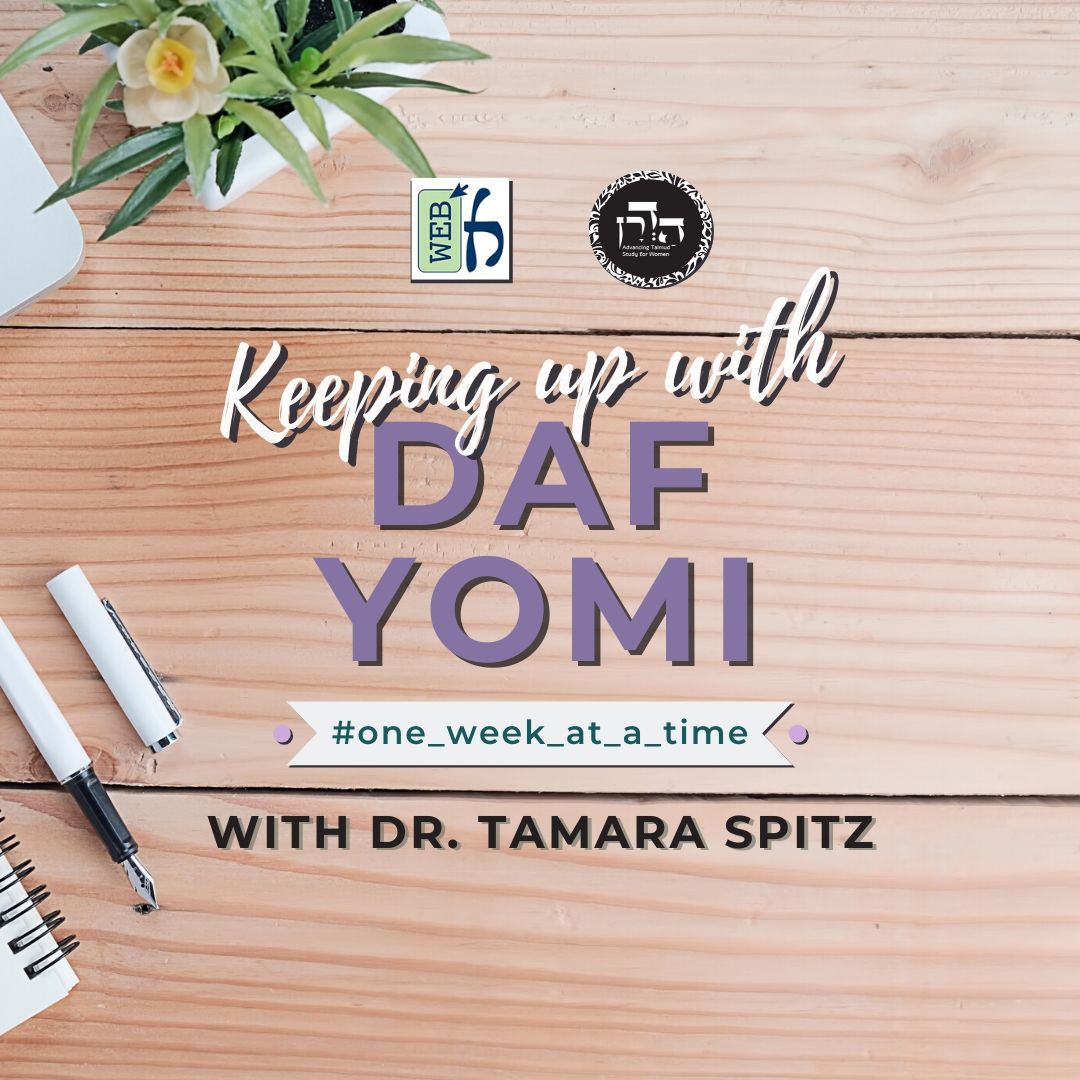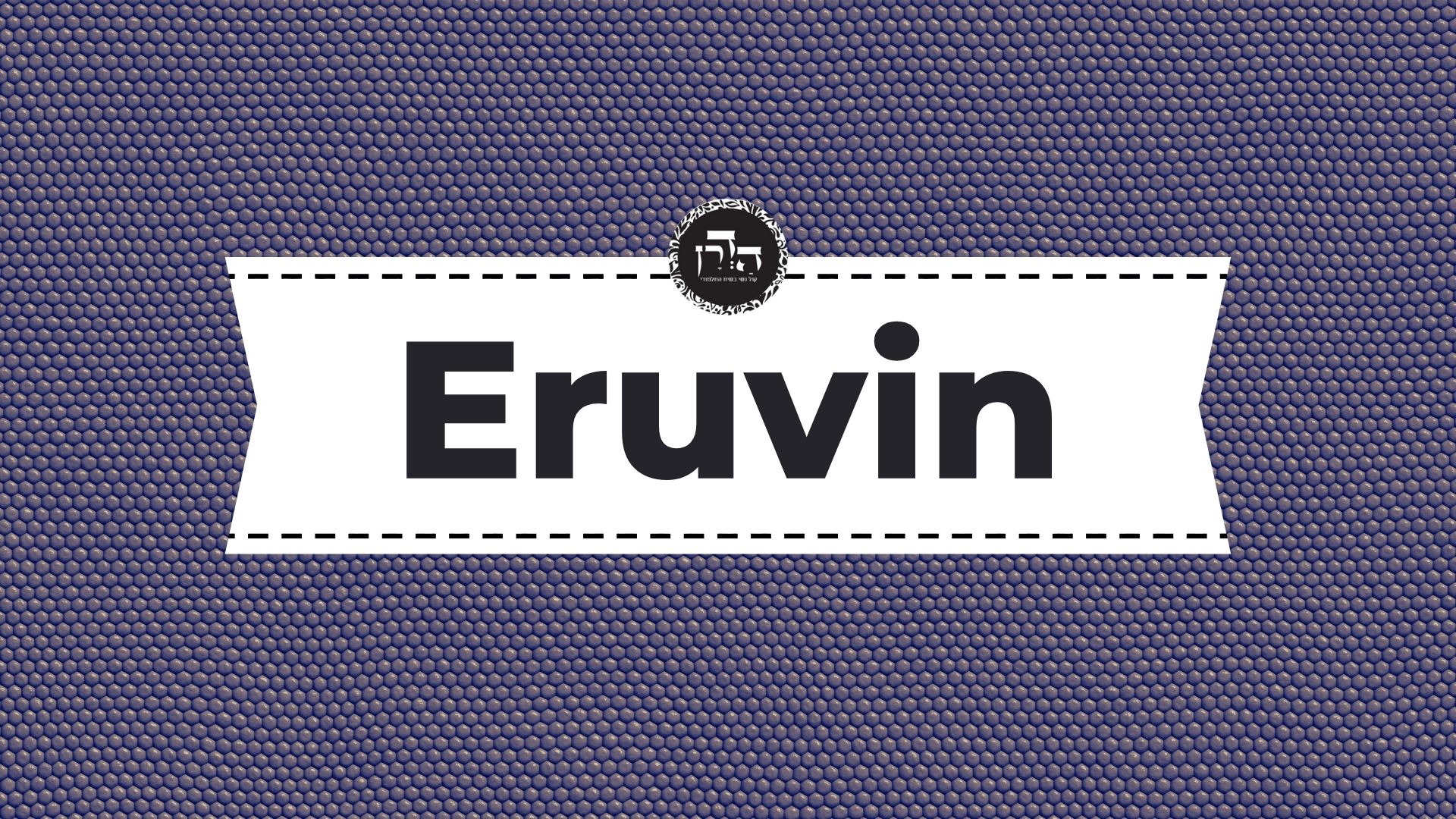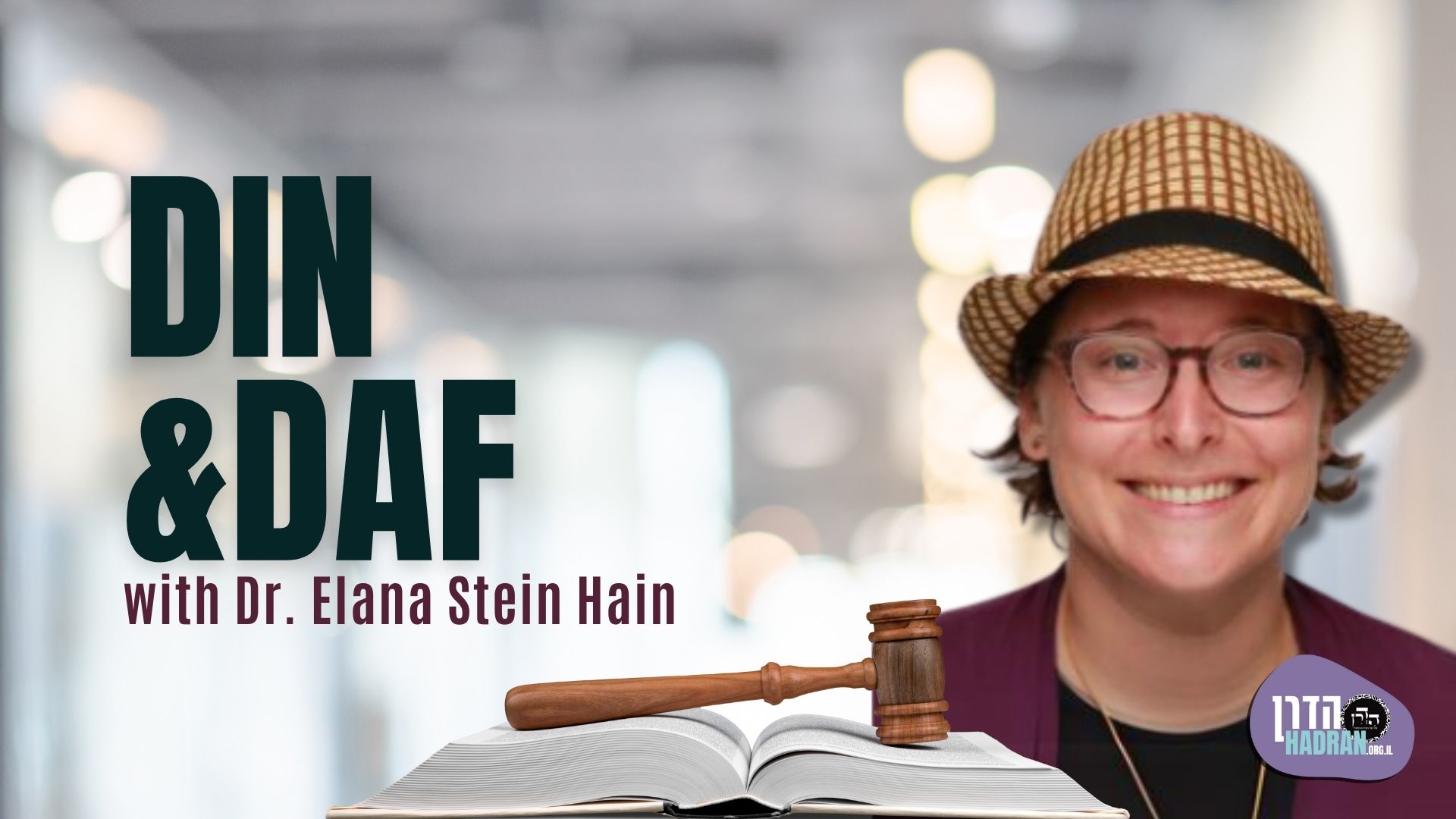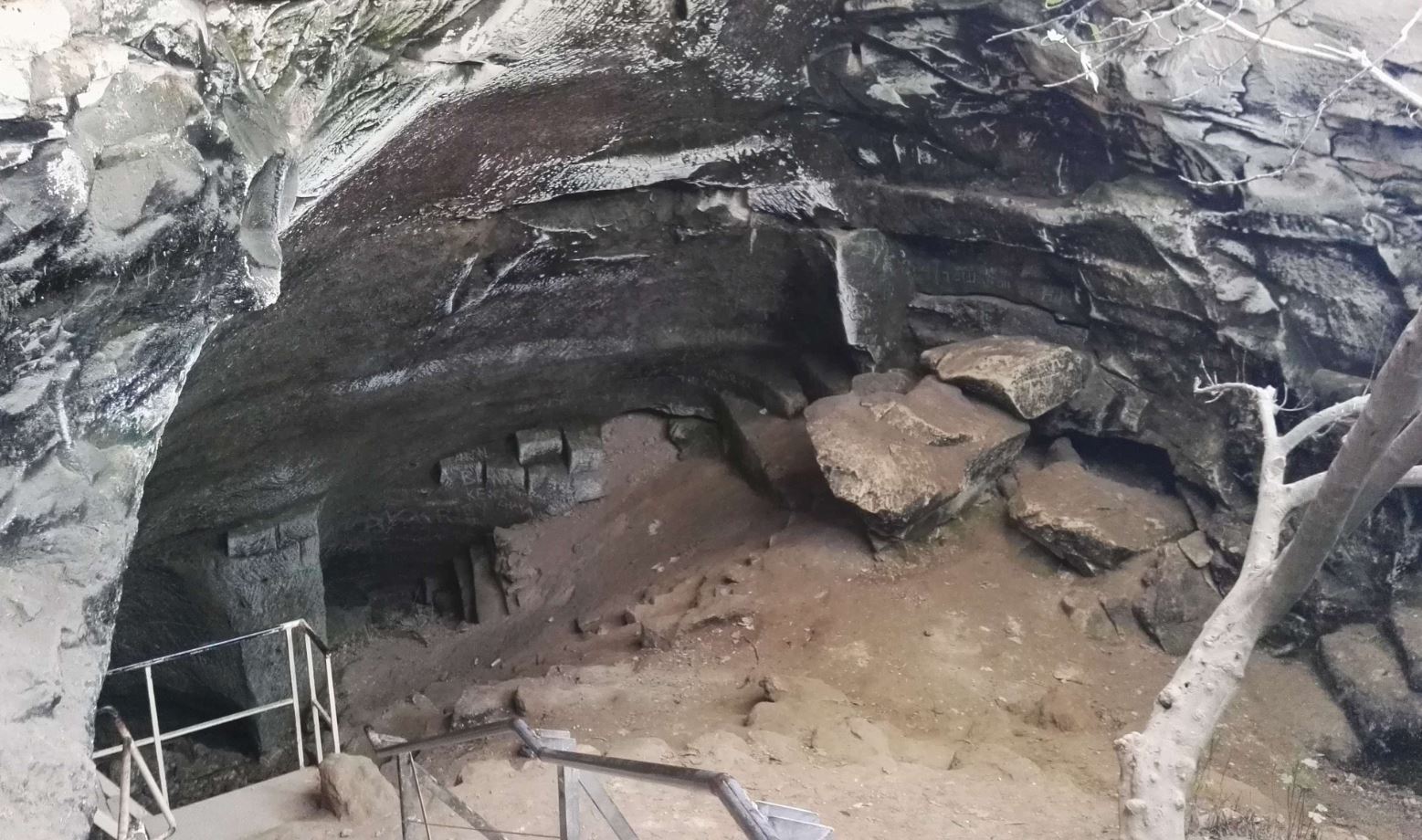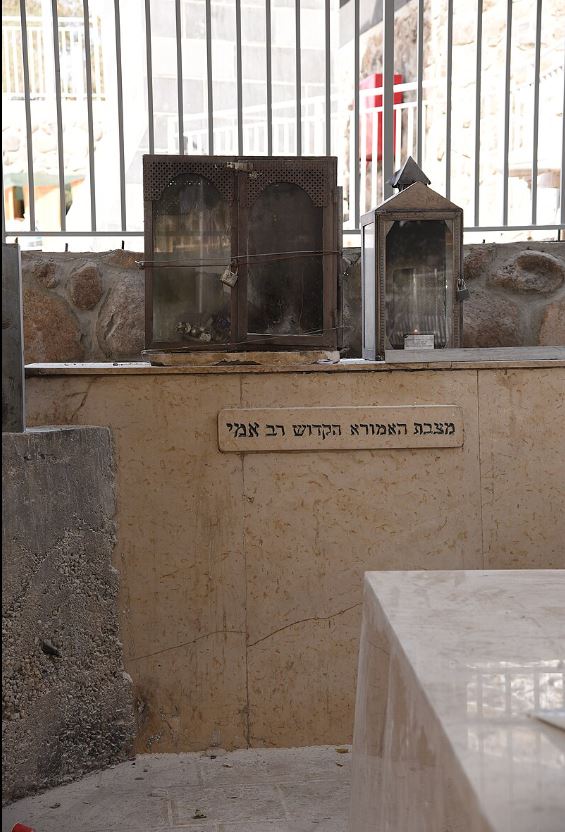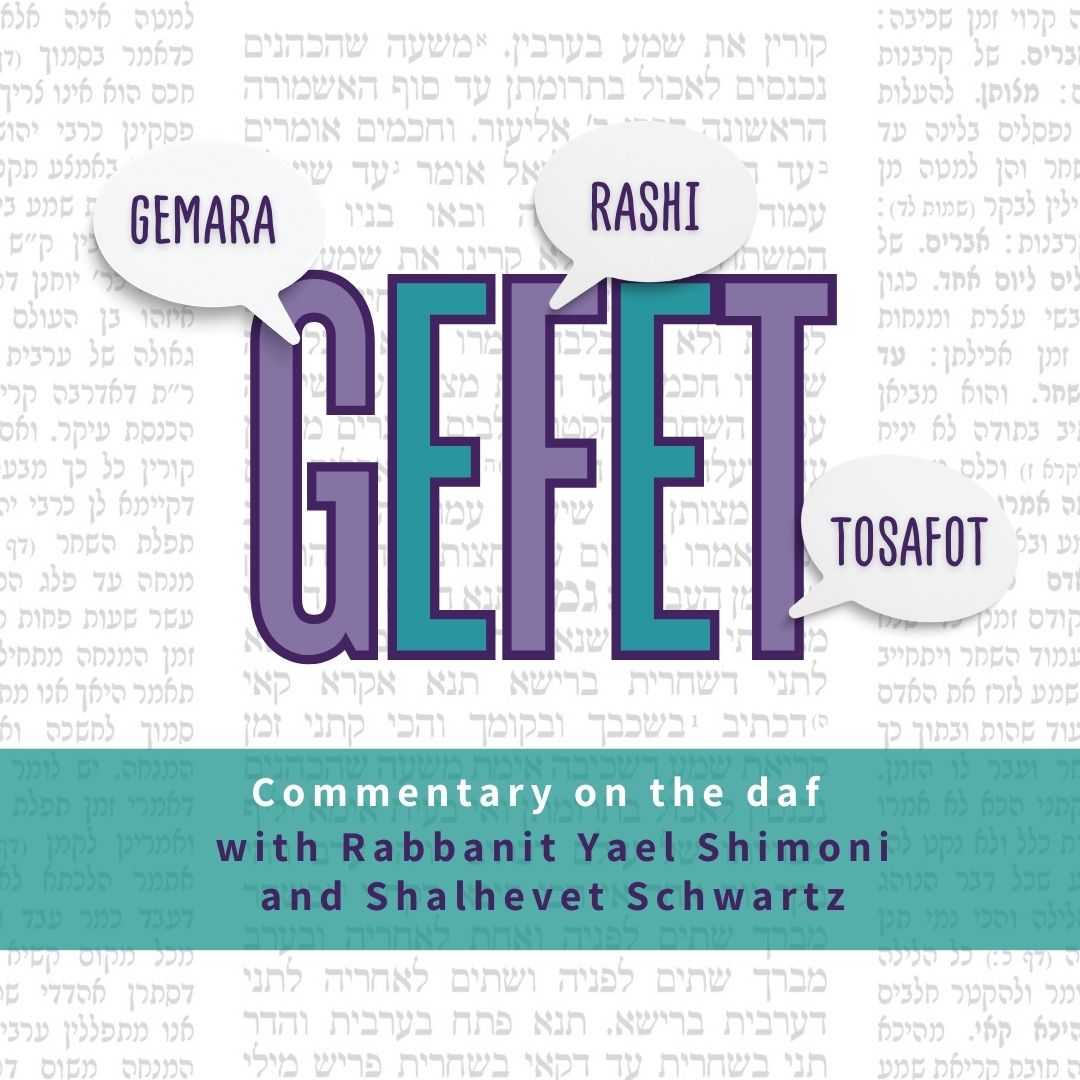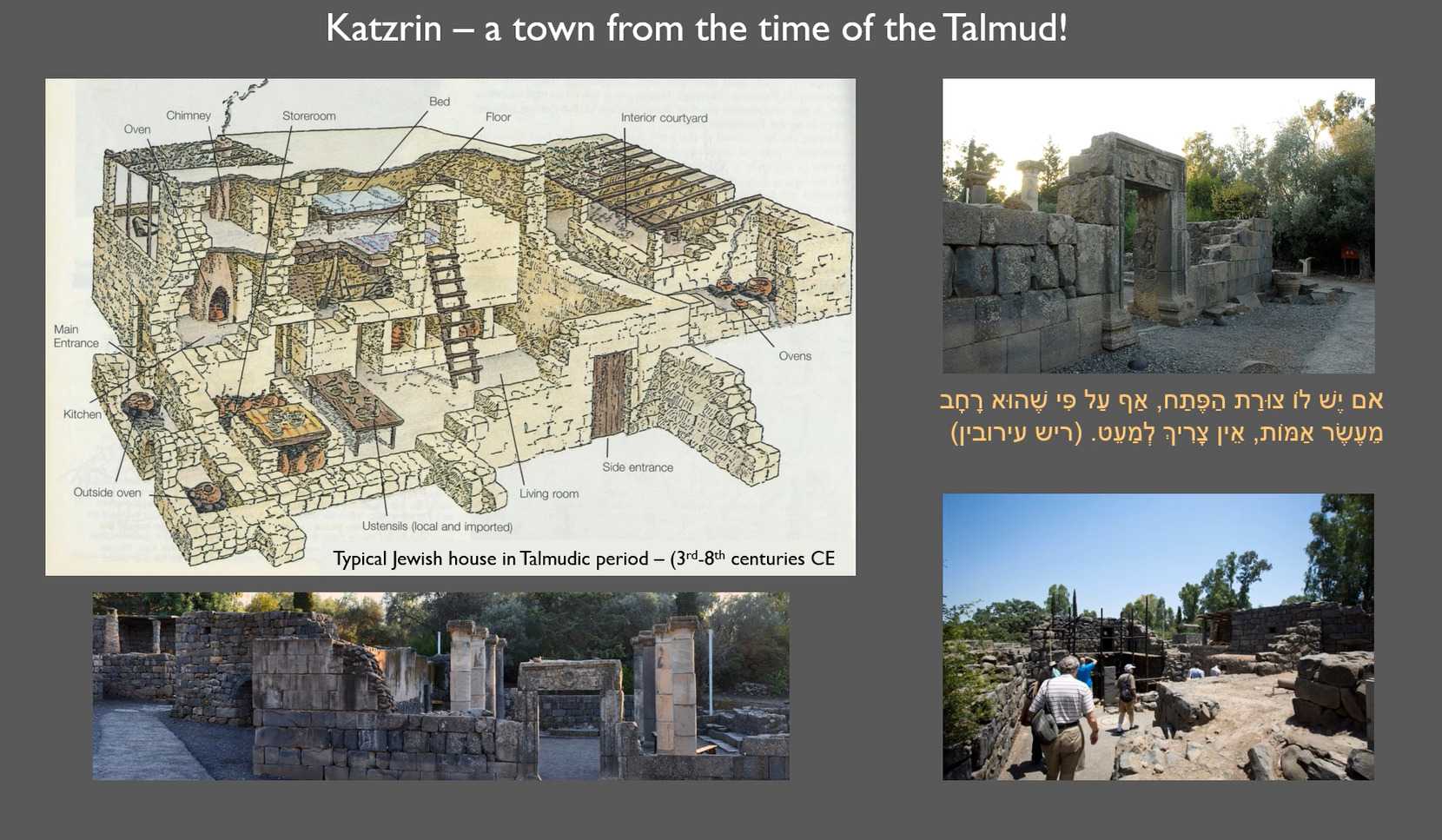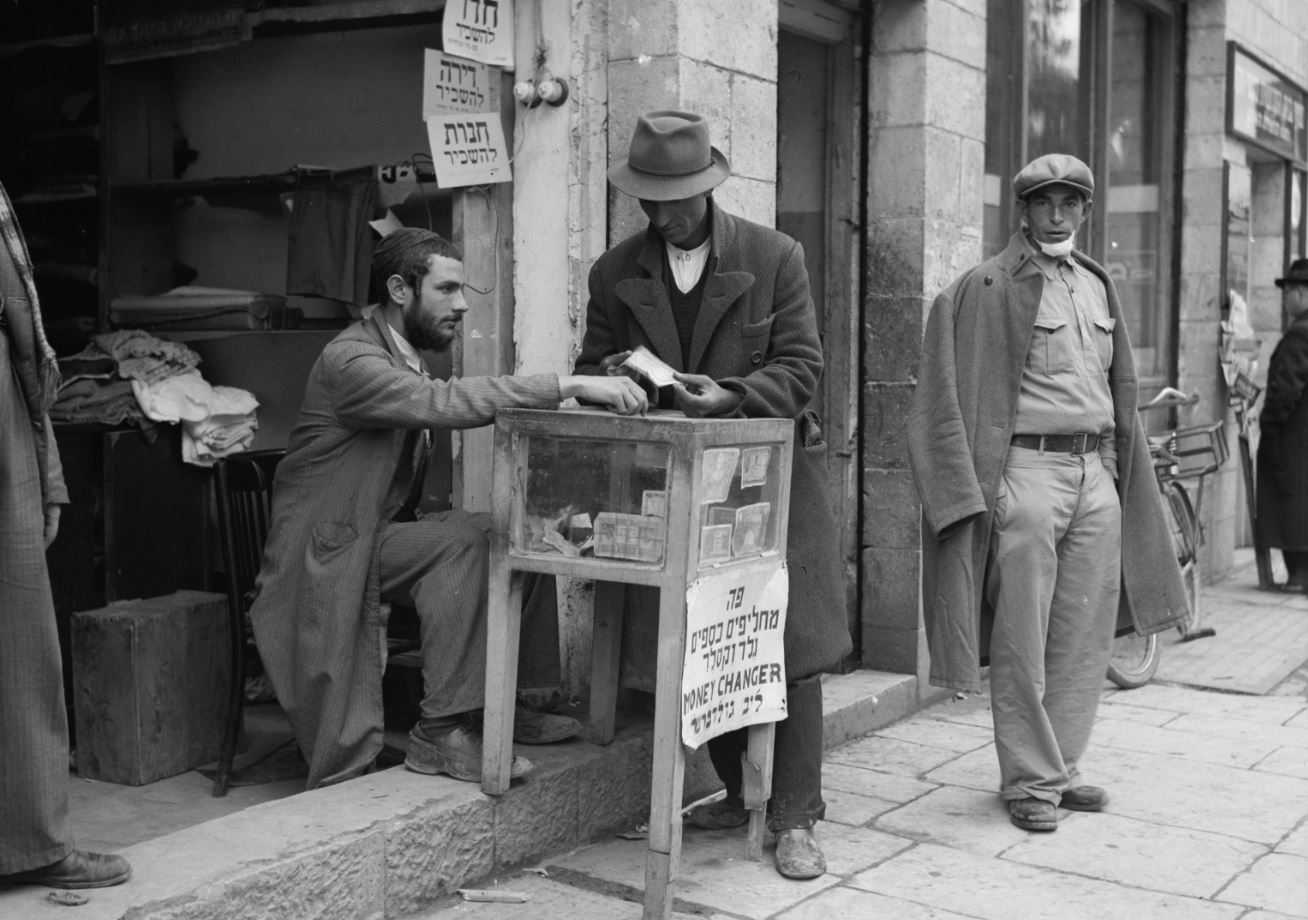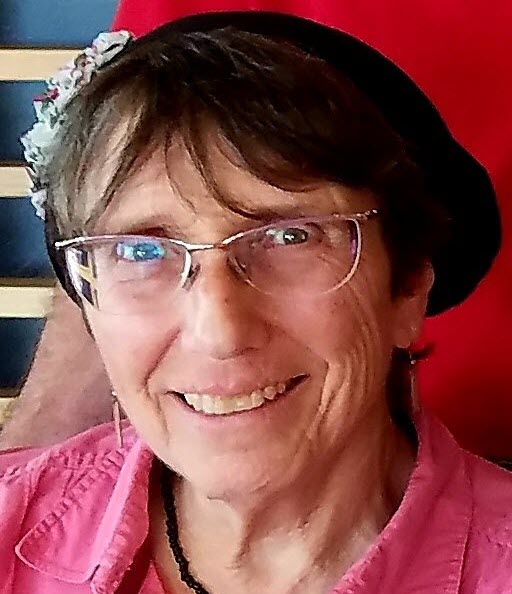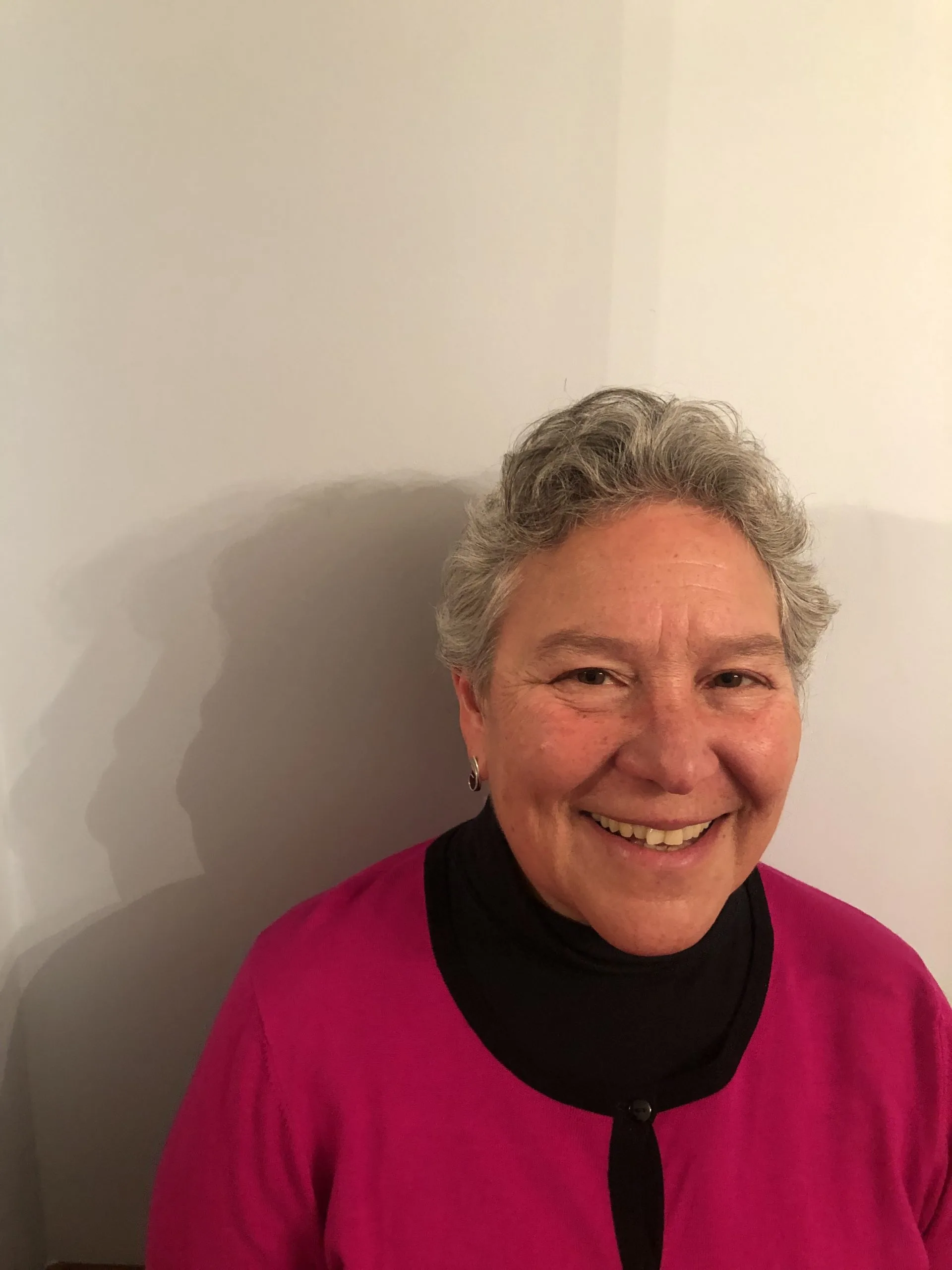From where was the oil brought for the menora and the meal offerings? Which olives could be used? How were they prepared? There is a difference between the oil that needed to be used for the menora and the one that could be used for meal offerings. From where were the grapes for the wine libations brought?
This month’s learning is dedicated in memory of Rabbi Dr. Raymond Harari z”l, on his 1st yahrzeit. As an educator, principal of Yeshiva of Flatbush, and community rabbi, he inspired thousands with his wisdom, warmth, and unwavering commitment to Torah.
Want to dedicate learning? Get started here:


Today’s daily daf tools:
This month’s learning is dedicated in memory of Rabbi Dr. Raymond Harari z”l, on his 1st yahrzeit. As an educator, principal of Yeshiva of Flatbush, and community rabbi, he inspired thousands with his wisdom, warmth, and unwavering commitment to Torah.
Today’s daily daf tools:
Delve Deeper
Broaden your understanding of the topics on this daf with classes and podcasts from top women Talmud scholars.
New to Talmud?
Check out our resources designed to help you navigate a page of Talmud – and study at the pace, level and style that fits you.
The Hadran Women’s Tapestry
Meet the diverse women learning Gemara at Hadran and hear their stories.
Menachot 86
ואם הביא פסול (והתניא ואם הביא כשר) מפני שהוא שרף
but if one did bring a meal offering made of such oil, it is not valid. But isn’t it taught in a baraita that if one did bring it, it is valid, because it is regarded merely as sap and not as oil? This contradicts this mishna, which assumes that it is regarded as oil.
אמר רב יוסף לא קשיא הא ר’ חייא הא ר’ שמעון בר רבי דר’ חייא זריק ליה ור’ שמעון בר רבי מטבל [ביה] (ליה) וסימניך עשירים מקמצין:
Rav Yosef said: It is not difficult to resolve this contradiction. This baraita expresses the opinion of Rabbi Ḥiyya, and that mishna expresses the opinion of Rabbi Shimon, son of Rabbi Yehuda HaNasi. As Rabbi Ḥiyya would toss such oil away, as he did not consider it to be oil, and Rabbi Shimon, son of Rabbi Yehuda HaNasi, would dip his food into it, as he considered it to be oil. The Gemara concludes: And your mnemonic by which to remember their respective opinions is: The wealthy are parsimonious, i.e., Rabbi Shimon, son of Rabbi Yehuda HaNasi, was wealthy, and he did not toss the oil away.
(אסתר ב, יב) ששה חדשים בשמן המור מאי שמן המור רב הונא בר חייא אמר סטכתא ר’ ירמיה בר אבא אמר שמן זית שלא הביא שליש:
§ The Gemara digresses to discuss oil of myrrh: In describing the treatments provided to the women in preparation for their meeting with King Ahasuerus, the verse states: “For so were the days of their anointing accomplished: Six months with oil of myrrh, and six months with sweet odors and with other ointments of the women” (Esther 2:12). The Gemara asks: What is “oil of myrrh”? Rav Huna bar Ḥiyya says: It is the aromatic oil called setakhta. Rav Yirmeya bar Abba says: It is an oil derived from olives that have not yet reached one-third of their growth; the acidic oil is effective as a depilatory.
תניא (נמי הכי) רבי יהודה אומר אנפקנון שמן זית שלא הביא שליש למה סכין אותו שמשיר את השיער ומעדן את הבשר:
The Gemara notes: This explanation of Rav Yirmeya bar Abba is also taught in a baraita: Rabbi Yehuda says: The term anpikanon is referring to olive oil produced from olives that have not yet reached one-third of their growth. And why do women spread it on their bodies? They do so because it removes the hair and pampers the skin.
אין מביאין מן הגרגרין שנשרו במים תנו רבנן שמן זית כבוש שלוק שרוי ושל שמרים ושל ריח רע לא יביא ואם הביא פסול
§ The mishna teaches: One may not bring meal offerings containing oil from olives that were soaked in water, nor from pickled olives, nor from boiled olives, and even if one did bring it, it is not valid. The Sages taught in a baraita: Olive oil produced from pickled olives, boiled olives, or olives soaked in water, and oil made from olive sediment, and oil with a foul odor may not be brought as part of a meal offering, and even if one did bring it, it is not valid.
בעי רבה הקדישו מהו שילקה עליו משום בעל מום כיון דפסול כבעל מום דמי או דלמא אין בעל מום אלא בבהמה תיקו:
Rava asks: If one consecrated one of these unfit oils for use in meal offerings, what is the halakha with regard to whether he should be flogged for consecrating it due to the prohibition against consecrating a flawed item as an offering? Does one say that since it is unfit, it is comparable to a blemished animal? Or perhaps the prohibition against consecrating a flawed item applies only to an animal. The Gemara concludes: The dilemma shall stand unresolved.
מתני׳ שלשה זיתים הן ובהן שלשה שלשה שמנים
MISHNA: There are three harvests of olives each year, and in each of them, three different grades of oils are produced.
הזית הראשון מגרגרו בראש הזית וכותש ונותן לתוך הסל ר’ יהודה אומר סביבות הסל זה ראשון
How is the first olive harvest processed? One picks the ripe olives at the top of the olive tree, as those are the first to ripen, and crushes them in a mortar and places them inside the bottom of a wicker basket that has many small holes in it. The oil will then drip from the olives through those holes into a vessel placed underneath the basket. Rabbi Yehuda says: One positions the olives on the walls, surrounding the basket. This produces more refined oil, as the dregs stick to the walls of the basket. This is the first grade of oil produced from the first harvest.
[חזר] וטוען בקורה ר’ יהודה אומר באבנים זה שני
After the oil ceases to seep from the crushed olives, one then presses down with a wooden beam upon them, causing additional oil to flow from the basket into the vessel. Rabbi Yehuda says: The excessive pressure produced by pressing down with a beam would cause some of the flesh of the olives to get mixed in with the oil, compromising its quality. Rather, one applies pressure by placing stones upon the olives. This is the second grade of oil.
חזר וטחן וטען זה שלישי
One then ground the olives with a millstone and pressed down with a beam on those olives to extract any remaining oil; this is the third grade of oil.
הראשון למנורה והשאר למנחות
The first grade is fit for kindling the Candelabrum, which requires: “Refined olive oil” (Leviticus 24:2), and the rest are fit for use in meal offerings.
השני מגרגרו בראש הגג וכותש ונותן לתוך הסל רבי יהודה אומר סביבות הסל זה ראשון
How is the second olive harvest processed? One picks the crop of olives that is accessible while one is standing on the rooftop. This was the second lot of olives to ripen. And one crushes it in a mortar and places those olives into a wicker basket, allowing the oil to drip through the holes into a vessel underneath. Rabbi Yehuda says: One positions the olives on the walls, surrounding the basket. This is the first grade of oil from the second harvest.
טוען בקורה ורבי יהודה אומר באבנים זה שני
One then presses down upon those olives with a wooden beam, thereby producing more oil. And Rabbi Yehuda says: One applies pressure only by placing stones upon them. This is the second grade of oil.
חזר וטחן וטען זה שלישי
One then ground the olives with a millstone and pressed down upon them with a beam, thereby extracting any remaining oil; this is the third grade of oil.
הראשון למנורה והשאר למנחות
The first grade is fit for kindling the Candelabrum, and the rest are fit for use in meal offerings.
שלישי עוטנו בבית הבד עד שילקה ומעלהו ומנגבו בראש הגג כותש ונותן לתוך הסל רבי יהודה אומר סביבות הסל זה ראשון
How is the third olive harvest processed? This harvest consists of all the olives that still remain on trees. One packs it into a vat [oteno] in the building that houses the olive press [beit habbad] where it remains until it softens, and then one raises it up to the roof and dries it on the rooftop to remove the foul-smelling liquid secreted from the olives while in the vat. Then, one crushes the olives in a mortar and places them into a wicker basket, allowing the oil to drip through the holes into a vessel underneath. Rabbi Yehuda says: One positions them on the walls, surrounding the basket. This is the first grade of oil.
טוען בקורה רבי יהודה אומר באבנים זה שני
One then presses down on those olives with a wooden beam, thereby producing more oil. And Rabbi Yehuda says: One applies pressure only by placing stones upon them. This is the second grade of oil.
חזר וטחן וטען זה שלישי
One would then grind the olives with a millstone and press down upon them with a beam, thereby extracting any remaining oil; this is the third grade of oil.
הראשון למנורה והשאר למנחות:
The first grade is fit for kindling the Candelabrum, and the rest are fit for use in meal offerings.
גמ׳ איבעיא להו מגרגרו תנן או מגלגלו תנן
GEMARA: A dilemma was raised before the Sages: What is the correct text of the mishna? Do we learn that one picks the olives at the top [megargero], i.e., one selects those that are ripe, or do we learn that one allows all the olives to ripen [megalgelo], and then picks them all?
תא שמע דתניא שמן זית מזיתו מכאן אמרו זית ראשון מגלגלו בראש הזית וכונסו לבית הבד וטוחנו בריחים ונותנו בסלין שמן היוצא ממנו זה היה ראשון
The Gemara answers: Come and hear the resolution to this dilemma from that which is taught in a baraita. The verse states that the olive oil used for the kindling of the Candelabrum is to be: “Refined oil of an olive” (Exodus 27:20), which is interpreted to mean that the olives should be so ripe that the oil drips from them while they are still hanging on their olive tree, without them needing to be pressed. From here the Sages said that for the first olive harvest, one allows all the olives to ripen [megalgelo], picks the entire crop and brings it into the olive press, and he grinds it with a millstone and places it in wicker baskets, and this oil that would flow from it would be the first grade of oil.
טען בקורה שמן היוצא ממנו זה היה שני וחזר ופרק טחן וטען זה היה שלישי הראשון למנורה והשאר למנחות וכן זית שני
The baraita continues: Then one presses down upon the olives with a wooden beam. As for the oil that flows from it, this would be the second grade of oil. And then one would remove the crushed olives from the baskets and grind them, and press down upon them with a beam or stones, thereby extracting any remaining oil; this would be the third grade of oil. The first grade is fit for kindling the Candelabrum, and the rest are fit for use in meal offerings. And the same process was similarly used for the second olive harvest.
וזית שלישי עוטנו בבית הבד עד שילקה ומעלה לראש הגג ועושה אותו כמין תמרה עד שיזובו מימיו וכונסו לבית הבד וטוחנו בריחים ונותנו בסלין ושמן היוצא ממנו זה היה ראשון
The baraita continues: And for the third olive harvest, the entire crop is packed into a vat in the building that houses the olive press, where it remains until it softens, and then one raises it up to the roof and makes it into a sort of heap, wide at the bottom and narrow at the top, and leaves it there until the fluid it produced while in the vat flows away. And then one brings it to the olive press and grinds it with a millstone and places it into wicker baskets. As for the oil that would then flow from it, this would be the first grade of oil.
טען בקורה שמן היוצא ממנו זה היה שני פרק חזר וטחן וטען זה היה שלישי הראשון למנורה והשאר למנחות
Then one presses down upon it with a wooden beam. As for the oil that would then flow from it, this would be the second grade of oil. And then one would remove the crushed olives from the baskets and grind them, and press down upon them with a beam or stones, thereby extracting any remaining oil; this would be the third grade of oil. The first grade is fit for kindling the Candelabrum, and the rest are fit for use in meal offerings.
רבי יהודה אומר לא היה טוחנו בריחים אלא כותשו במכתשת ולא היה טוען בקורה אלא באבנים ולא היה נותנו בסלין אלא לתוך סביבות הסל
The baraita concludes: Rabbi Yehuda disagrees with the Rabbis and says: One does not grind the crop of olives with a millstone; rather, one crushes it in a mortar. And one does not press down upon the olives with a wooden beam; rather, one presses on them with stones. And one does not place the olives into the bottom of the wicker baskets; rather, one positions them on the inner walls of the basket, all around the basket. In this baraita, the term: One allows all the olives to ripen [megalgelo], is used.
הא גופא קשיא כותש מני רבי יהודה היא תוך הסל אתאן לרבנן
Having resolved the dilemma based on the baraita, the Gemara now clarifies the ruling of the mishna in light of it. The Gemara asks: This mishna itself is difficult, as the first tanna teaches that the olives should be crushed. From the baraita it is evident that whose opinion is it that the olives are crushed? It is the opinion of Rabbi Yehuda. Yet, when the first tanna states that the olives are placed inside the bottom of the basket, and not on its walls, we arrive at the opinion of the Rabbis who disagree with Rabbi Yehuda in the baraita.
האי תנא סבר לה כותיה בחדא ופליג עליה בחדא:
The Gemara explains: This tanna of the mishna holds in accordance with the opinion of Rabbi Yehuda with regard to one issue, i.e., the need to crush the olives, but disagrees with him with regard to another issue, i.e., he holds that the olives should be placed inside the basket, not on its walls.
מתני׳ הראשון שבראשון אין למעלה הימנו השני שבראשון והראשון שבשני שוין השלישי שבראשון והשני שבשני והראשון שבשלישי שוין השלישי שבשני והשני שבשלישי שוין השלישי שבשלישי אין למטה הימנו
MISHNA: Having enumerated the nine grades of oils in the previous mishna, this mishna proceeds to rank them by their quality: As for the first grade of oil that is produced from the first harvest, there is none superior to it. The second grade of oil that is produced from the first harvest and the first grade of oil that is produced from the second harvest are of equal quality; there is no reason to choose one over the other. The third grade of oil that is produced from the first harvest and the second grade of oil that is produced from the second harvest and the first grade of oil that is produced from the third harvest are of equal quality. The third grade of oil that is produced from the second harvest and the second grade of oil that is produced from the third harvest are of equal quality. As for the third grade of oil that is produced from the third harvest, there is none inferior to it.
אף כל המנחות היו בדין שיטענו שמן זית זך מה מנורה שאינה לאכילה טעונה שמן זית זך מנחות שהן לאכילה אינו דין שיטענו שמן זית זך תלמוד לאמר (שמות כז, כ) זך כתית למאור ואין זך כתית למנחות
Also, with regard to all the meal offerings, it was logical that they should require the highest quality of refined olive oil, just like the Candelabrum. Because if the Candelabrum, whose oil is not to be consumed on the altar, requires refined olive oil, then meal offerings, which are to be consumed on the altar, is it not logical that they should require refined olive oil? To dispel this notion, the verse states: “Refined pounded olive oil for illumination” (Leviticus 24:2), which indicates that the high-quality, refined, pounded oil is required for the Candelabrum, but there is no need for refined pounded olive oil for meal offerings.
גמ׳ שוין והא אמרת ראשון למנורה והשאר למנחות אמר רב נחמן בר יצחק מאי שוין שוין למנחות:
GEMARA: The Gemara asks: How can the mishna state that the second grade of the first harvest and the first grade of the second harvest are of equal quality? But didn’t you say that the first grade of each harvest is fit for kindling the Candelabrum and the rest are fit only for use in meal offerings? It would appear then that the first grade in any harvest is actually superior to the second grade of other harvests. To resolve this, Rav Naḥman bar Yitzḥak said: What does the mishna mean when it states that they are of equal quality? It means that they are equal with regard to meal offerings, and there is no reason to choose one over the other.
אף [כל] המנחות היו בדין [וכו’]: תנו רבנן (שמות כז, כ) זך אין זך אלא נקי רבי יהודה אומר כתית אין כתית אלא כתוש
§ The mishna teaches: Also with regard to all the meal offerings, it was logical that they should require refined olive oil. To dispel this notion, the verse states: “Refined pounded olive oil for illumination” (Leviticus 24:2). The Sages taught in a baraita with regard to the verse cited in the mishna: The word “refined” means nothing other than clean oil, which flows by itself from the olives without applying any pressure. Rabbi Yehuda says that the word “pounded” means nothing other than olives crushed with a mortar, but not with a millstone.
יכול יהא זך כתית פסול למנחות תלמוד לאמר (שמות כט, מ) ועשרון סולת בלול בשמן כתית אם כן מה תלמוד לאמר למאור אלא מפני החיסכון
One might have thought that refined, pounded oil is unfit for meal offerings, since the verse specifies that this oil is to be used for illumination. To dispel this notion, the verse states with regard to the meal offering brought with the daily offering: “And a tenth of fine flour, thoroughly mixed with a quarter of a hin of pounded oil” (Exodus 29:40). This indicates that pounded oil is fit to be used in meal offerings. If so, what is the meaning when the verse states that the refined pounded oil is “for illumination”? Rather, the Torah requires the use of refined pounded oil only for the Candelabrum, due to the sparing [haḥisakhon] of money, as the highest-quality oil is very expensive.
מאי חיסכון אמר רבי אלעזר התורה חסה על ממונן של ישראל
The Gemara asks: What is the reason for being sparing? Rabbi Elazar says: The intention is that the Torah spared the money of the Jewish people and did not require that the highest-quality oil be used for the meal offerings.
(ויקרא כד, ב) צו את בני ישראל ויקחו אליך שמן זית זך אמר רבי שמואל בר נחמני אליך ולא לי לא לאורה אני צריך:
§ The Gemara discusses the Candelabrum and other aspects of the Temple. The verse states: “Command the children of Israel, and they shall take for yourself refined pounded olive oil for illumination, to kindle the lamps continually” (Leviticus 24:2). Rabbi Shmuel bar Naḥmani says: God tells the Jewish people that the oil should be taken “for yourself,” to indicate that it is for their benefit and not for My benefit, as I do not need its light.
שלחן בצפון ומנורה בדרום אמר ר’ זריקא אמר ר’ אלעזר לא לאכילה אני צריך ולא לאורה אני צריך
Similarly, with regard to the Table of the shewbread, located in the north of the Sanctuary, and the Candelabrum, located in the south of the Sanctuary, Rabbi Zerika says that Rabbi Elazar says: God said to the Jewish people: I do not require the Table for eating, nor do I require the Candelabrum for its illumination. In evidence of this, the Candelabrum was not positioned close to the Table, as is done by one who sets a table with food in order to eat there.
(מלכים א ו, ד) ויעש לבית חלוני שקופים אטומים תנא שקופין [מבפנים] ואטומים [מבחוץ] לא לאורה אני צריך
With regard the Temple built by King Solomon, the verse states: “And he made for the House, windows narrow and broad” (I Kings 6:4). The Sages taught in a baraita: Typically, windows are constructed to widen toward the inside in order that the light from the outside would be dispersed throughout the room. For the Temple, God said: Make the windows narrow within and broad without, as I do not require its illumination. On the contrary, the light of the Temple is to be radiated outward.
(ויקרא כד, ג) מחוץ לפרכת העדות באהל מועד עדות הוא לכל באי עולם שהשכינה שורה בישראל
God instructed Aaron to kindle the Candelabrum: “Outside the Curtain of the testimony in the Tent of Meeting” (Leviticus 24:3). The dividing curtain is referred to here as: The Curtain of the testimony, to indicate that the illumination of the Candelabrum is testimony to all of humanity that the Divine Presence rests among the Jewish people.
ואם תאמר לאורה אני צריך והלא כל ארבעים שנה שהלכו ישראל במדבר לא הלכו אלא לאורו אלא עדות הוא לכל באי עולם שהשכינה שורה בישראל
And if you question this and say: How is this testimony; perhaps the Candelabrum is lit for illumination? To this God would respond: Do I need its light? But isn’t it so that for all forty years that the Jewish people walked in the wilderness of Sinai until they entered Eretz Yisrael, they walked exclusively by His light, i.e., from the pillar of fire that guided them at night. If God provides light for others, he certainly does not need it Himself. Rather, evidently, the illumination of the Candelabrum is testimony to all of humanity that the Divine Presence rests among the Jewish people.
מאי עדותה אמר רבא זה נר מערבי שנותנין בה שמן כנגד חברותיה וממנה היה מדליק ובה היה מסיים:
What provides its testimony? Rava says: The testimony is provided by the westernmost lamp of the Candelabrum, in which they place a quantity of oil equivalent to that placed in the other lamps, and nevertheless it continues to burn longer than any of the other lamps. It burns so long that every evening, from it the priest would kindle the Candelabrum, i.e., he lit that westernmost lamp first, and the following morning, with it he would conclude the preparation of the lamps for the following evening’s lighting, because it remained alight longer than any of the other lamps. This perpetual miracle was testimony to God’s continuous presence among His people.
מתני׳ מאין היו מביאין את היין קדוחים ועטולין אלפא ליין שניה להן בית רימה ובית לבן בהר וכפר סיגנא בבקעה כל ארצות היו כשרות אלא מיכן היו מביאין
MISHNA: From where would they bring the wine for libations? Keduḥim and Attulin are the primary sources for wine. Secondary to them is Beit Rima and Beit Lavan, located in the mountain, and the village of Signa, located in the valley. All the regions were valid sources for wine; but it was from here, i.e., the aforementioned locations, that they would bring the wine.
אין מביאין לא מבית הזבלים ולא מבית השלחים ולא ממה שנזרע ביניהן ואם הביא כשר אין מביאין הליסטיון ואם הביא כשר אין מביאין ישן דברי רבי וחכמים מכשירין אין מביאין לא מתוק ולא מעושן ולא מבושל ואם הביא פסול ואין מביאין מן הדליות אלא מן הרגליות ומן הכרמים העבודין
One may not bring libations of wine that come from a fertilized vineyard, or from an irrigated vineyard, or from a vineyard in which grain was sown between the vines. But if one did bring a libation from such wine, it is valid. One may not bring libations from sweet wine made from sun-dried grapes [hilyasteyon], but if one did bring a libation from such wine, it is valid. One may not bring wine aged for one year; this is the statement of Rabbi Yehuda HaNasi, but the Rabbis deem it valid. One may not bring libations from sweet wine, nor from wine produced from smoked grapes, nor libations from boiled wine, and if one did bring a libation from such wine, it is not valid. And one may not bring wine produced from grapes suspended on stakes or trees; rather, one brings it from grapes at foot height, i.e., that rest on the ground, which are superior-quality grapes, and from vineyards that are cultivated, i.e., where one hoes beneath the vines twice a year.
ולא כונסין אותו בחצבין גדולים אלא בחביות קטנות ואינו ממלא את החבית עד פיה כדי שיהא ריחו נודף
And when producing wine for libations, one should not collect the wine into large barrels, as it causes the wine to spoil; rather, it should be placed in small casks. And one does not fill up the cask until its mouth; rather, one leaves some empty space so that its fragrance will collect there and diffuse when the lid is opened.
אינו מביא מפיה מפני
One should not bring libations from wine that rests at the mouth of the cask due to



